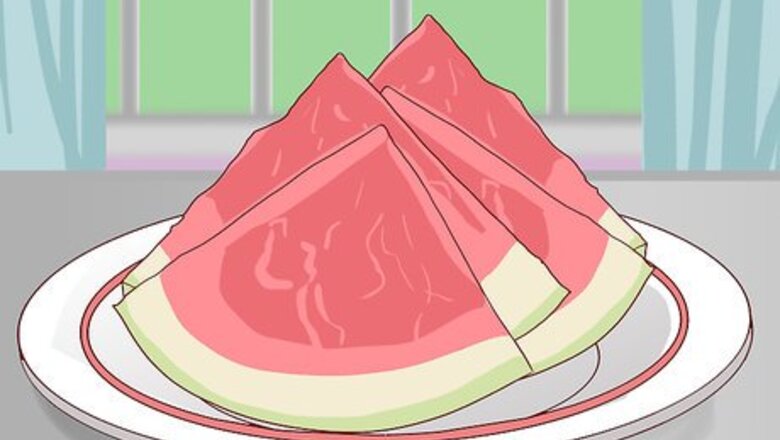
views
Using Healthy Ways to Feel Fuller
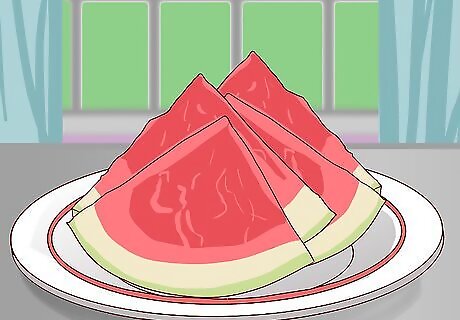
Reach for low-energy dense foods. Low-energy dense foods are ones that have a few calories for a large amount of food. High-energy dense foods are the opposite. They have a large number of calories in a small amount of food. If you reach for low-energy dense foods, you'll feel fuller without adding too many calories to your day. Take vegetables and fruits, for example. They have a high water content, so they make you feel fuller for fewer calories, especially compared to something like oil or butter. For example, you could eat a single pat of butter or two cups of broccoli for the same number of calories. Make sure to add some fruits or vegetables to your breakfast line up. For instance, you could eat a banana, slices of tomato, or pieces of watermelon.
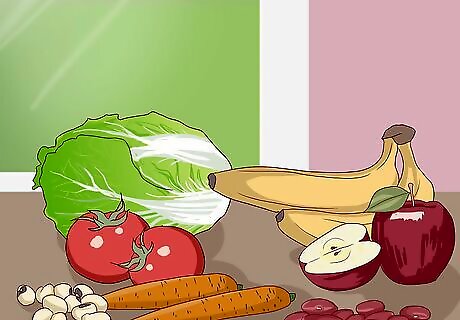
Fill up with fiber. Foods that are rich in fiber take longer for your body to digest, keeping you full for a longer period of time. Trying loading up fiber-rich foods with your breakfast. Fruits, vegetables, and whole grains are particularly high in fiber. Beans are also a good source of fiber. Try to get as many vegetables onto your plate first thing in the morning. If you're already eating some fruits and vegetables with breakfast, that's great. You could also try adding a piece of 100 percent whole-wheat toast or a bowl of oatmeal for some whole grains.
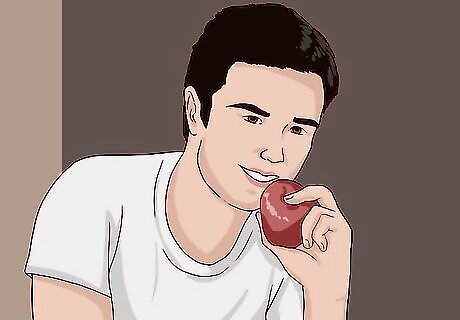
Choose whole fruit instead of juice. Juice has been a staple at many breakfast tables. However, if you're looking to stay full, picking whole fruit is a better option. With juice, you get the nutrients but not the fiber. The fiber in whole fruit will fill you up and help you stay full. However, when you blend whole fruits, such as in a smoothie, you retain the fiber.
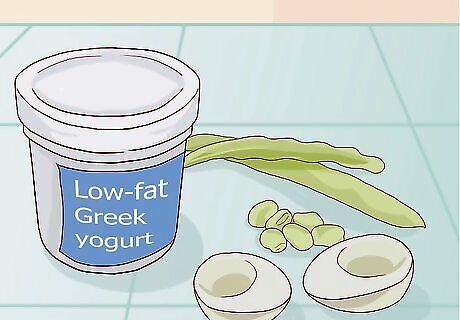
Add protein. Protein makes you feel full by preventing the release of a hormone called ghrelin, which makes you feel hungry. At breakfast, you should eat about 30 grams of protein to get this effect. Low-fat Greek yogurt and egg whites are both healthy, protein-rich options for breakfast. To get the full 30 grams of protein in your breakfast, you can also try: One large egg and four ounces of Canadian bacon. One cup of low fat cottage cheese topped with one ounce of nuts and half a cup of berries. One cup of oatmeal prepared with one and a half cups of soy milk. Top with one and a half ounces of almonds and one tablespoon of hemp seeds. A tofu scramble made with 3/4 cup tofu and one vegetarian sausage patty. Add an ounce of soy milk on top.
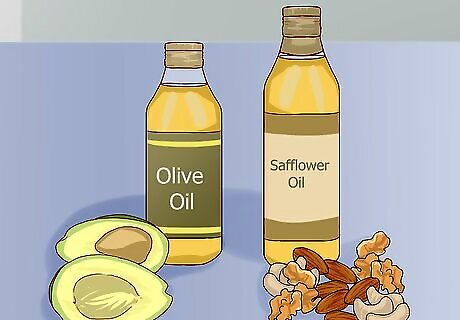
Pick healthy fats. To really feel full, you should go light on fats because they are high calorie without providing bulk. However, some fat is fine, and when you do reach for fats, healthy fats are best. Look for unsaturated fats for a healthy diet. Unsaturated fats include foods like avocados, olive oil, nuts, seeds, corn oil, safflower oil, and ground flaxseed. Many types of fish are also a great source of unsaturated fat, such as tuna, rainbow trout, mackerel, sardines, and bluefish.
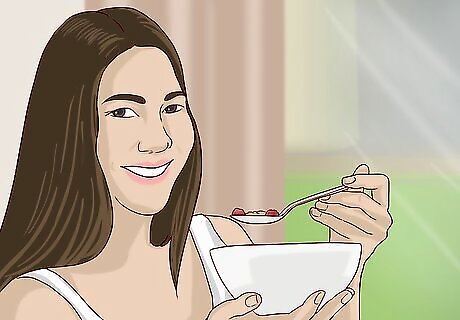
Don't try to save calories for later. Many dieters avoid eating breakfast, so they have more calories to eat later. However, doing so can lead to you being so hungry later that you overindulge. You'll often eat enough that you're adding more calories to your overall intake rather than saving some. Plus, eating regularly throughout the day helps keep your blood sugars steady, which in turn can lower your cholesterol.
Using Make-Ahead Options
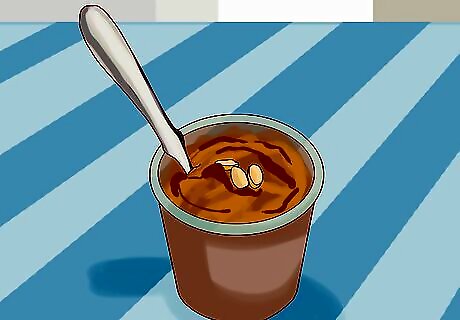
Try overnight oats. Overnight oats are a quick and easy way to have a solid, nutritional breakfast that will keep you full for hours. The oats have a lot of fiber, and if you add in more protein and maybe some fruit, it will definitely fill you up. You prepare the ingredients in a jar and place it in the refrigerator overnight. In the morning, pull it out, and eat it cold. Try peanut butter and jelly flavored overnight oats. In a bowl, add a cup of old-fashioned oats, 1 1/2 cups (360 milliliters) of almond, soy, or regular milk (low-fat), 2 tablespoons (30 milliliters) of of peanut butter, a scoop of vanilla protein powder, and a dash of cinnamon. Combine the ingredients, and let them sit overnight. It makes two servings that you can top with your favorite jam or jelly or even some fresh strawberries.
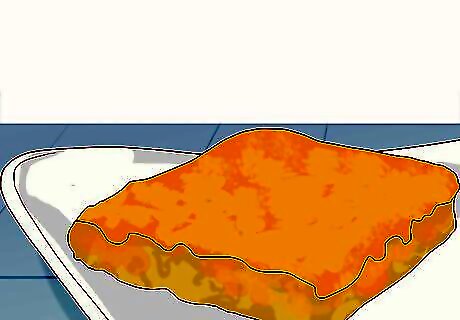
Make an egg casserole. Egg casseroles are a great way to feed a crowd while doing the work ahead of time. You can make many egg casseroles the night before and bake them in the morning for breakfast, keeping things simple in the morning. Plus, they're heavy on protein, and you can add vegetables for extra fiber. For instance, try combining 4 eggs, several dashes of salt, and a dash or two of pepper in a bowl. Whisk the eggs until they are well beaten. Next, add in a 16-ounce (473 milliliters) container of cottage cheese (low-fat), a frozen 10-ounce (296 milliliters) package of chopped spinach (make sure to thaw it out and squeeze out any liquid), chopped green onions (1 bunch), 1 cup (240 milliliters) of shredded low-fat cheese (cheddar is a good option), 1/4 cup (60 milliliters) of whole-wheat flour, and a 1/4 cup (60 milliliters) of cooked, crumbled bacon (you can use real bacon bits). For flavor, add 3 tablespoons (44 milliliters) of fresh dill or basil. You can also use 1 teaspoon (5 milliliters) of dried herbs instead. Pour the mixture in an 8-inch greased pan, and cover it. Put it in the refrigerator overnight. Let it bake for about 45 minutes at 350 degrees Fahrenheit (177 degrees Celsius) in the morning. Try serving this casserole with a side of whole wheat toast or even some whole-grain pancakes for extra protein and some added whole grains. You could also serve it with some fresh fruit and a whole-grain muffin.
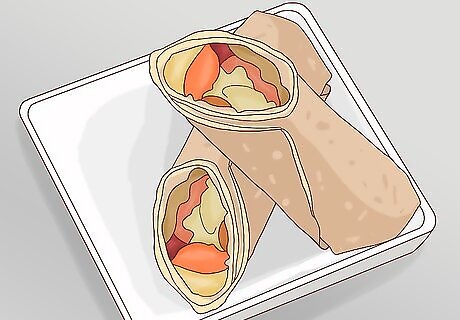
Freeze breakfast burritos. You may be tempted to pick up those frozen breakfast burritos at the grocery store. However, you can make your own at home that at are much more filling and healthier overall. Plus, you'll save some money. Start with large tortillas (in the 10-inch to 12-inch range). Dice and cook two potatoes any way you'd like, as well as a sliced onion, a bell pepper, or any vegetable you'd like. You can roast them by spreading them in a pan, drizzling some olive oil on top along with some salt and pepper, and roasting them for 20 minutes at 400 degrees Fahrenheit (204 degrees Celsius). Scramble and cook a dozen eggs in a pan. Let both fillings cool. You can also cook some turkey breakfast sausage if you'd like. Lay out the tortillas. Place a scoop of vegetables and a scoop of eggs in each tortilla. Add any other toppings you'd like, including the sausage, a sprinkle of cheese, or a handful of beans. An ounce of cheese, for example, will add up to seven grams of protein. Roll up the tortillas into burritos. Wrap each one tightly in foil. Freeze them in a single layer, then put them in a gallon-size zip-top bag. To eat them, take them out of the aluminum foil, then microwave for a minute or two. Try adding a bowl of fruit on the side to make it extra filling. A glass of low fat milk or soy milk can add up to eight grams of extra protein to this meal.
Making Filling Options in the Morning

Try simple peanut butter toast. One quick option for the morning is to pair peanut butter or another nut or seed butter with 100% whole grain toast. Just lightly toast the bread and smear the nut or seed butter on top while it is still warm. Add a sliced banana on top to make it extra filling. This breakfast combines protein (nuts or seeds, plus the whole grains in the bread), fiber (whole grains and the banana), and low-energy dense foods to make it more filling (the banana). Another good option is spreading a bit of almond butter on toast with a layer of low-fat cottage cheese and a bit of jam on top. Pair it with some fruit to make it even more filling.
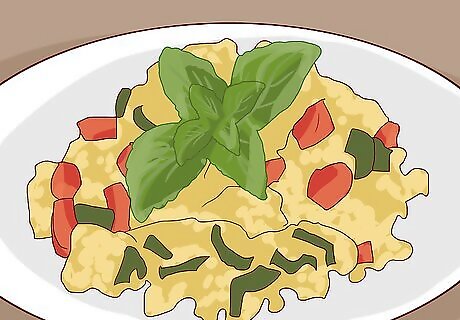
Create a simple egg scramble. An egg scramble filled with lots of fresh veggies and a touch of cheese is a great way to get in protein, fiber, and filling veggies. Pair it with a side of fruit or some whole-grain toast, and you're good to go for the morning. Scramble two eggs or three egg whites. Add a bit of butter or oil to a nonstick pan on medium heat, then add in your favorite veggies. You can use onions, mushrooms, tomatoes, spinach, or squash. If you're using spinach, hold off on adding it. Let the veggies cook until they're starting to get tender. Add the eggs into the pan, and stir until the eggs are setting up. Stir in the spinach, cooking until it wilts. Throw in a small dash of low-fat cheese on top.
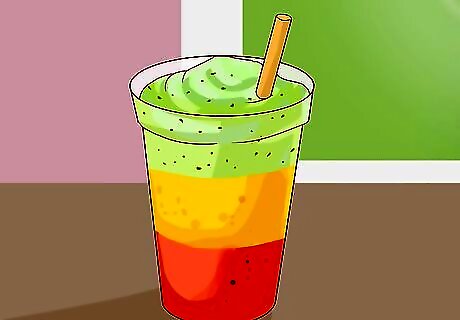
Make a smoothie. Smoothies are an easy way to combine high-fiber foods like fruits and vegetables with high protein-foods like Greek yogurt or peanut butter. You'll need a blender to blend all the ingredients together thoroughly. For instance, try combining a single banana, 5 strawberries or 6 or 7 raspberries, 2 cups (480 milliliters) of spinach, 4 ounces (120 milliliters) of Greek yogurt, 1 tablespoon (15 milliliters) of almond butter, and a 1/4 cup (60 milliliters) of cannellini beans in a blender. You may need to add some liquid such as water or low-fat milk to thin it out.
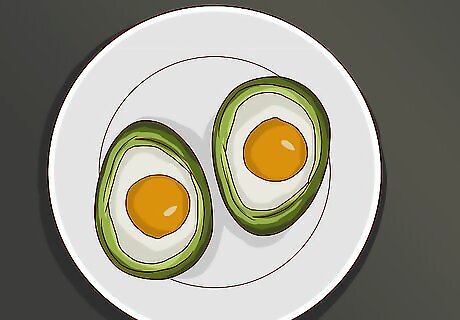
Bake eggs in avocados. While avocados are high in fat, they are a good fat. Eating them paired with protein and a side of high-fiber carbohydrates (think whole-wheat toast, cut-up fruit, or even slices of tomatoes) should keep you filled up until lunchtime. This breakfast takes about 10 to 12 minutes to bake, but you don't have to watch it the whole time. Slice avocados in half lengthwise. Scoop out the seed with a spoon. Add a dash of hot sauce to each of the halves (if you'd like). Crack an egg in each half, and add a dash of salt and pepper. Add any other condiments you'd like (such as pesto). Bake for 10 minutes or so at 450 degrees Fahrenheit (232 degrees Celsius), until the yolk is set to your liking. You can also beat the eggs before pouring them into the avocado.
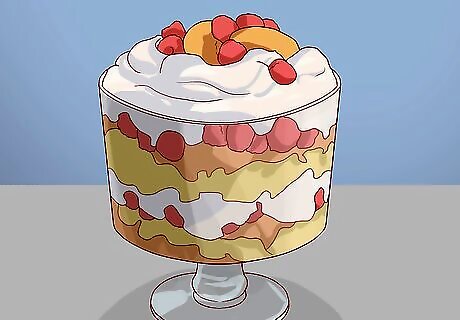
Create your own parfait. A parfait is a simple way to get a filling breakfast in. Start with eight ounces of your favorite Greek yogurt, which is high in protein. Layer it with granola, fresh fruit, and nuts to your liking. You can even add a bit of honey or a scoop of your favorite jam. The yogurt, nuts, and granola all add protein, while the granola and fresh fruit keep you full with fiber.
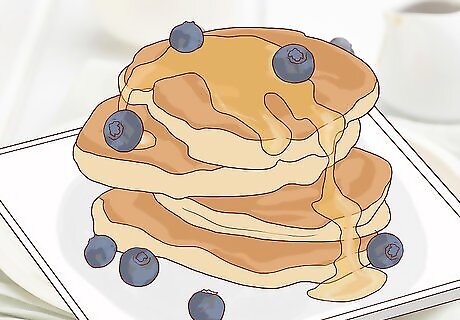
Try protein-packed pancakes. Pancakes aren't always considered the most filling, healthy breakfast, but you can add protein to make them more filling. For instance, some recipes add cottage cheese (blended) to the batter to make them more filling. Try oatmeal-cottage cheese pancakes. In a blender, add 1/2 cup (120 milliliters) of old-fashioned rolled oats, 1/4 cup (60 milliliters) of low-fat cottage cheese, a couple of tablespoons of low-fat milk (or milk replacement), 1/2 a banana, a dash of vanilla extract, a couple of dashes of cinnamon, and an egg (or 2 egg whites). Blend until smooth. Cook in a medium-hot pan. Add in extras like blueberries, nut butter, banana slices, or chocolate chips. For an extra-filling meal, add a side of eggs and a low-fat breakfast meat, such as turkey bacon.


















Comments
0 comment